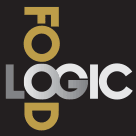The quick response (QR) code is a square, black and white digital image that connects a user to a URL – be it a website, social pages, pdf or landing page.
Although it was invented in 1994 in Japan to track parts in an automotive factory, it was only this century that QR codes became readable to anyone with a smartphone. And of course the technology really came into its own in 2020-21, when venue check in and contactless menus became a priority.
While the worst of the pandemic rules and restrictions are behind us, QR codes are here to stay. And the benefits go beyond simply directing diners to a menu.
A QR code can be a window to your business and an essential marketing tool. Restaurants, cafés, clubs, pubs and hotels are using QR codes to:
• Order and pay for meals
• Showcase their menu with images and links to featured suppliers
• Direct people to their website for more information about their venue
• Highlight their function and events offering
• Send diners to their social pages and build a community
• Sign up patrons to their newsletter and database.
How to insert a QR code
Implementing QR codes in your business is relatively straightforward, and setting it up depends on how you want to use the technology.
If you wish to start encouraging diners to order and pay for their meal from the table, talk to your POS provider or reach out to an ordering platform, as this is sure to be an option they can offer.
Make sure you test out the system before implementing it to ensure it is smooth and user-friendly. Does it have too many steps? Is it easy to navigate and link to payment platforms?
If it is too hard to use it will put people off and reflect negatively on your brand, so ensure it is running well.
Remember a QR code does not replace a friendly smile and helpful waiters, so ensure your front of house team are trained and ready to assist where needed.
Some restaurants may like the convenience and flexibility of an online menu, but still wish to use front of house staff to take orders and payment. In this case just use an online QR code generator, there are plenty of free tools such as canva.com, qrcode-monkey.com and bitly’s qr-code-generator.com.
Beyond the menu, you can use a QR code from an online generator to direct diners to any URL you choose, be it socials, events, feedback or your newsletter signup page.
Expect to see more and more QR codes on packaging, signage and flyers, as consumers become accustomed to using them for many different purposes. Many people appreciate them in preference to using a search engine or typing in a URL themselves.
The key to implementing QR codes without losing customers is to ensure you have an alternative in place, ready for people who do not have a smartphone, can’t connect to data or wifi, or who are not comfortable using technology this way.
Your front of house team should also be on hand to welcome guests, ensure they are happy to use a QR code, and check back that they have found the menu and/or ordered their meal. Because even the most efficient and useful tech can’t replace a smile from a fellow human!
For more on QR codes and other trends in 2023, listen to FoodLogic’s new podcast, The Business of Taste.
